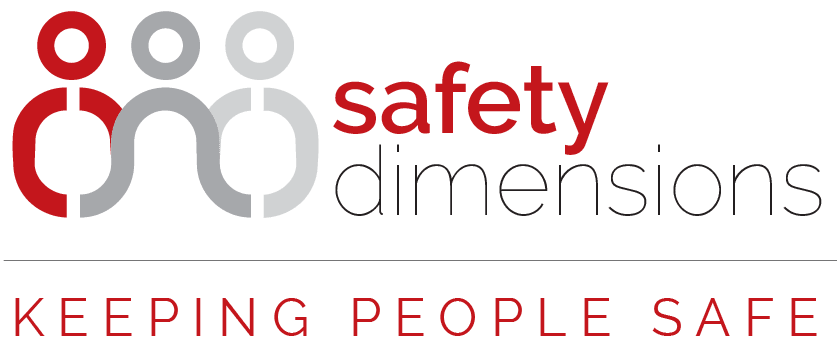
Melissa Williams, CEO Learning Dimensions Network After a conversation with Leadership Dimensions Managing Partner Janet McCulloch, we have been reflecting on the topic of leadership. Let’s face it, being a leader today is a challenge. As we enter a world is more competitive, complex, globally connected (with speed and immediacy) and customers are more informed, and therefore demanding. Goal posts shift regularly and we work across-cultures, sometime with ambiguity and lack certainty. In the past, change was not as constant, and whilst the pressure to perform has always been there, but the speed at which this performance is now expected is unprecedented. This made me reflect on what’s changed in leadership and what the modern leader needs – distilled down to the top 8 skills that you’ll need to be a successful leader in 2018.
1. Change is the new normal
Change is now constant, and leaders are now expected to also be change managers. Gone are the days when a centralised HR team would manage all the ‘people’s stuff’. Now leaders are required to take on functions such as performance management, well-being, conflict management and mediation, training, and in many cases, recruitment of staff. Often leaders are promoted due to their technical brilliance’, not their HR skills, yet this is now a core competency of today’s leader. In Australia, The Fair Work Act was designed to simplify and make transparent how we operate at work which helped with the decentralisation of HR departments. In turn, this created an environment where leaders at all levels are often made accountable for the intricacies in the Act and how this can or can’t be interpreted on a day-to-day level. This is a big ask if you are new to HR!
2. Smarter not harder
The old, ‘work smarter not harder’ has been replaced with ‘work leaner and more efficiently’. Enabled by better technology, leaders are now working with fewer resources coupled with higher expectations. We often hear leaders struggle with knowing how to do this. The reality is, it is a hard ask to adapt to this mindset, yet it is possible.
3. The ability to get lean
Organisational structures are flattening and doing away with more middle management. Therefore, a leader needs to know exactly where their authorities start and finish in terms of budget and finances, yet the expectations of their broader roles may be more ambiguous. Many organisations have moved to a matrix-style operation where cross-functional project teams are formed. Effective leaders then need to focus less on authority and more about building cross-functional teams, sharing and collaboration.
4. The need for connection
With a significant increase in social media and overall virtual connectivity, the workplace has become a primary IRL (in real life) community for some people. A leader’s ability to create teams and increase participation and inclusion in diverse teams is directly attributable to people’s satisfaction at work, with a direct impact on people’s productivity and the organisational bottom line. Being able to foster, manage and grow cohesive connected communities, both online and in real life, is a vital skill for the modern leader.
5. Watch your words
With increased visibility on the impact of workplace bullying, leaders have tended to become far more aware and cautious about the nature of performance-related conversations. In some cases, this awareness has led to a reluctance to have challenging conversations related to feedback and performance improvement. However, leaders are expected to understand and implement the difference between managing performance and feedback vs discrimination, bullying and harassment and ensure they manage this balance effectively.
6. Safety starts from the top
Similar to HR, we find work, health and safety (WHS) is decentralising and is now a significant expectation of all leaders. Even if “Safety” isn’t part of your title, as a leader you’re responsible. In fact Queensland has just legislated to bring in Industrial Manslaughter laws ensuring negligent employers are personally culpable in workplace deaths. Our sister brand, Safety Dimensions, who specialise in safety leadership, offers programs that focus on safety as being part of everyone’s role, not just those at the top. However, just like the HR component of a modern leader’s role, effective WHS requires an understanding and an ability to integrate this knowledge into day to day behaviours of your people and the organisation’s processes.
7. Human beings vs human resources
Emotional intelligence, mindfulness and compassion – these are words and skills that have made their way into part of the definition of leadership skills. A leader is expected to be self-aware and be able to effectively see and manage reactions in others and balance their EQ versus IQ to reach the optimal management mix.
8. Managing stress
With the changes outlined above, and the societal and family pressures our world places on us, it’s no wonder that we have seen a significant increase in stress-related illnesses in the workplace. A leader in today’s work environment is expected to notice symptoms of stress in themselves and others and know what steps to take. A leader’s role is not to be a counsellor, however, they are expected to notice changes in behaviour in others (and themselves) and provide support to reduce the negative stress. Often the symptomology is not always ‘loud’ in terms of a person’s behaviour. This means in the busyness of our day, taking the time to identify these symptoms and know what to do about it.
Companies should have an expectation that staff will conduct themselves with professional maturity and emotional intelligence – even if someone doesn’t have the official directive of “Manager’ or ‘Leader’ in their title. We’ve noticed the trend in organisations to upskill ‘everyone’ to be leaders from the bottom up and this approach does make sense. However, from one leader to another, let’s face it, these expectations are exhausting. The demand to be a people/change/organisational expert as well as being good at your day job’ is relentless. However the simple reality is these 8 key challenges will only accelerate as the world gets smaller, technology increases and expectations for instant results intensifies. There is some good news. Whilst there is no miracle pill to developing a leader, there is an understanding that learning and development have adapted and changed to support the demands of being a modern leader. The rise in vocational training in Management and Leadership for those in professional jobs as well as trades is a testament to this change and I believe will continue to increase as the demands continue.
For more information on the content of this article or our Nationally recognised leadership and management qualifications, please contact [email protected]


